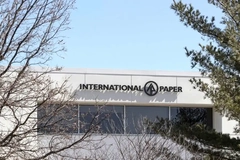Advanced recycling and the circular plastics economy: Environmental savior or burden?

28 Sep 2022 --- With stringent legislative targets set for recycling, recycled content and recyclability in packaging, the industry is increasingly looking to novel technologies as a means of reprocessing material unfit for current recycling streams. Much of the plastic used in everyday F&B packaging, particularly flexibles, is currently impossible to recycle almost anywhere in Europe.
This challenge puts many companies in a difficult position. The European Commission (EC) has imposed a 50% recycled content guideline for plastic packaging by 2025. With relatively few recycling facilities operating, given the size of the packaging industry, prices for recycled materials such as PET have already skyrocketed, threatening to put SMEs out of business in the near future.
The situation with flexibles and hard-to-recycle plastics is even worse. However, many companies are turning to the prospect of advanced recycling technology as a solution. These recycling processes effectively break down and reassemble the molecular components of plastic using high temperatures.
Achim Grefenstein, senior vice president of Constantia Flexibles, explains to PackagingInsights that the concept of advanced recycling technologies encompasses a range of methods.
“Advanced recycling is a synonym for chemical recycling and is often used by the chemical industry. It is the only option to produce food-approved, post-consumer recycled (PCR) materials for the time being,” he says.
“However, there are more advanced recycling technologies in the mechanical recycling streams, like hot washing, fine filtration, de-inking and deodorization, improving the recyclate quality. Some of these technologies, like ‘solvent-based-recycling,’ might even have the potential to create food-approved PCR in the future.” The European Commission has imposed a 50% recycled content guideline for plastic packaging by 2025.
The European Commission has imposed a 50% recycled content guideline for plastic packaging by 2025.
Advanced recycling challenges
Martina Wagner, group sustainability manager at Constantia Flexibles, says the issue of recycling and how it will impact business in Europe remains to be seen.
“The biggest challenge our industry faces is the uncertainty of what future legislation and design for recycling (DfR)-guidelines will look like. Constantia Flexibles follows a clear scientific approach and therefore believes in facts. We hope that politics will listen to the experts and not the lobbyists,” she remarks.
“As a global leader in consumer, food, and flexible pharmaceutical packaging, we are fully committed to actively contributing to and driving a circular economy and the development of recyclable, innovative packaging.”
Currently, various approaches to recyclability are taken in different regions of Europe. These disparate approaches cause issues for packagers when designing and processing materials, explains Wagner. Given the potential for advanced technologies like pyrolysis to recycle numerous types of plastic, for example, policymakers should reflect this in their definitions.
“We fully support legislation and regulations which improve the environmental performance of packaging and reduce the amount of packaging waste produced. Anyhow, given the efforts of the entire packaging value chain to increase and ensure the recyclability of our packaging already today, we have serious concerns about the current definition of recyclability discussed in the Circular Economy Action Plan,” she says.  Wagner, group sustainability manager at Constantia, says a consistent definition of “recyclability” is desperately needed.
Wagner, group sustainability manager at Constantia, says a consistent definition of “recyclability” is desperately needed.
“Leading companies in the packaging industry are already working intensively on this topic. They are providing their expertise to the governments, clarifying and explaining what is currently achievable from a technological point of view, what the consequences are, and what can be the expansion stage. We see it critical, for example, if we have 27 different definitions of recyclability in Europe. It is clear to all of us: harmonized legislation will help.”
If harmonized legislation is not achieved, it could leave many businesses open to penalties or costs that are underserved. This problem will become increasingly apparent as advanced recycling facilities are expanded throughout Europe.
Future-proof recyclability definition
To address these issues before they negatively impact the industry, Wagner says that “an actionable and forward-looking definition of recyclability must be technology and material neutral and foster the co-evolution of innovative packaging, recycling technologies and infrastructure.”
“Packaging can be recycled at scale into a product, material, or substance, enabling innovation in all recycling technologies. Nevertheless, governments and policymakers have to keep in mind the importance of packaging: it protects the goods and prevents food waste. Furthermore, a product’s whole life cycle must be considered to assess its environmental impact,” she continues.
 A recent Zero Waste Europe study warned pyrolysis of plastics may present an unnecessary climate change threat.“We foster the exchange with all relevant players to be informed about the latest developments. Based on that, we can optimize our packaging to the needs of the recycling industry and very often do much more than mentioned in actual DfR-guidelines.”
A recent Zero Waste Europe study warned pyrolysis of plastics may present an unnecessary climate change threat.“We foster the exchange with all relevant players to be informed about the latest developments. Based on that, we can optimize our packaging to the needs of the recycling industry and very often do much more than mentioned in actual DfR-guidelines.”
Chemical issues
Advanced recycling technologies are rapidly expanding throughout the world. Last year, a Rabobank specialist told PackagingInsights that they expect the number of chemical recycling facilities will more than double before 2025, reaching well over 200.
Notable major companies joining this trend with pilot projects and scale-up sites include Huhtamaki, which recently set up a plant in India. Also, in July, Trinseo partnered with Dutch circular business innovations company GMP Group to develop an advanced recycling facility for polystyrene.
Despite these projects and the rate at which development is moving globally, some environmental researchers question both the viability and impact of chemical recycling. This week, a study published yesterday by Zero Waste Europe (ZWE) found that greenhouse gas emissions from plastic packaging pyrolysis are nine times higher than that of mechanical recycling.
Accordingly, ZWE is urging the EC and industry leaders to prioritize the scale-up of mechanical recycling to meet the growing demand for recycled content.
This view contradicts the hope that chemical technology could or should answer the struggle to recycle more packaging material and help companies stay within the boundaries of tightening legislation.
By Louis Gore-Langton











